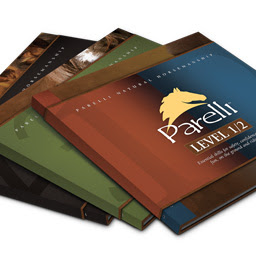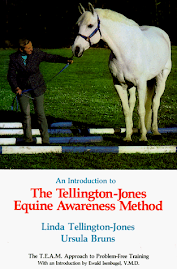I´m just saying - WOW, sometimes I´m a real idiot!!! I should get this article tattoed behind my eyelids!! How could I forget...
Something is happening with Parelli students all over the world that is a bit concerning, and it compelled me to write this blog. I need to clearly explain the difference between longeing (or “lunging”) and playing with your horse – because I’m seeing the Circling Game turning into longeing!
At the very first clinic I attended with Pat Parelli in 1989, he said, “I am a one-man coalition against longeing. I think it is one of the worst things you can do to a horse. Longeing exercises the body while the mind goes to pot.”
Wow. That hit me hard at that time; I was longeing my horse for at least 30 minutes to get him safe to ride. But of course he didn’t get safer, just fitter.
Recently I’ve been able to watch a large number of students, in different parts of the world, warming their horses up for riding and I’ve seen a pattern developing that would make steam come out of Pat’s ears!
- People walking in circles watching their horses intently as they trot around them.
- Horses being asked to carry their heads low as they trot.
Yikes – this is just like longeing! The horses are going in mindless circles, and their heads might as well be tied down because it is not by choice that they are carrying their heads that low.
I don’t know where this is coming from, but it’s spreading and I need to say something about it before people start to think this is how it should be done!
Warming a horse up on the ground means that you allow him to express himself; you give him what he needs and then he’ll want to do what you want. This is what Pat means when he says, “Cause your idea to become your horse’s idea, but understand your horse’s idea first.” Circling is often the first thing people do on the ground, but it is not necessarily what the horse needs. Yes, you should be able to do the Circling Game, but don’t make it your automatic go-to first thing.
How not to longe your horse: Keep your feet still, encourage the horse to use his brain (he has to think and take responsibility to maintain gait and direction without micromanagement), and allow him to put his head anywhere he wants because that’s going to tell you about his mental and emotional state and help you think about what you need to do.
- If his head is up, he’s on adrenaline: You’re going to need to get him calmer by getting him to go a little faster and run off the adrenaline (see my previous blog about asking the horse faster for a lap and waiting for three to see the effect, repeat as needed); if it’s a left-brain horse, do something else to get him more connected, such as a Touch It Pattern at walk then trot, or going exploring with him.
- If he is looking out of the circle, he’s wishing he was somewhere else! You probably need to back off the pressure, stop micromanaging or bring him in more often to find comfort with you and maybe even get some scratches or treats.
- If he lowers and stretches his neck, with nose leading (not over-flexed) and above his knees, he is relaxed and swinging through his body. This is what you are aiming for, and when you use the right approaches for your horse’s Horsenality™, this is what you will get. And once you’ve got it, your horse is probably ready to ride.
I hope this helps you to think more about how to do what your horse needs and to focus on making sure you are using psychology rather than mechanics as you play with your horse and develop your skills. Your horses will thank you, and we’ll keep that smile on Pat’s face… not to mention keep making the world a better place for horses and the people who love them.
Tagged as: linda parelli, Parelli Media
.
http://linda.parellinaturalhorsetraining.com/2011/12/longeing-vs-playing/
Friday, June 29, 2012
Subscribe to:
Post Comments (Atom)






























































I guess, my email was the same, LOL. You will get it fixed:)
ReplyDeletehahahaha..yeah, it was! it was really good to hear it from you though! i was on the right track but just wasn´t sure... thanks again Janine! you are the best!
ReplyDeletexoxox